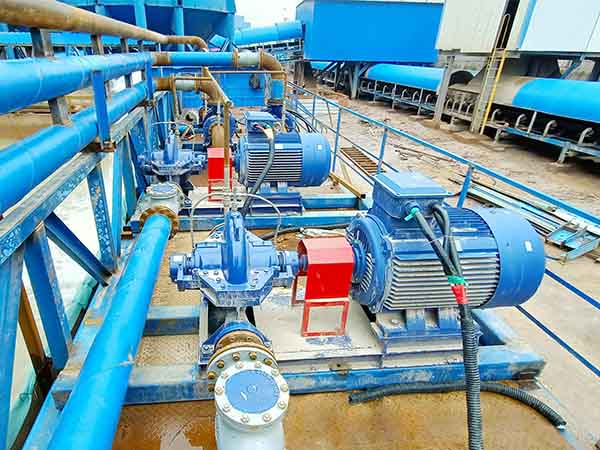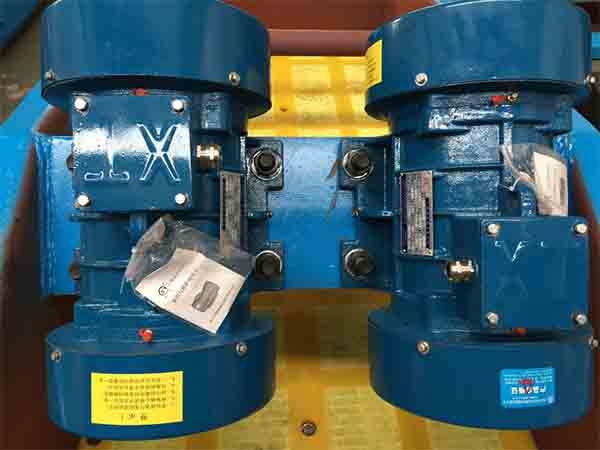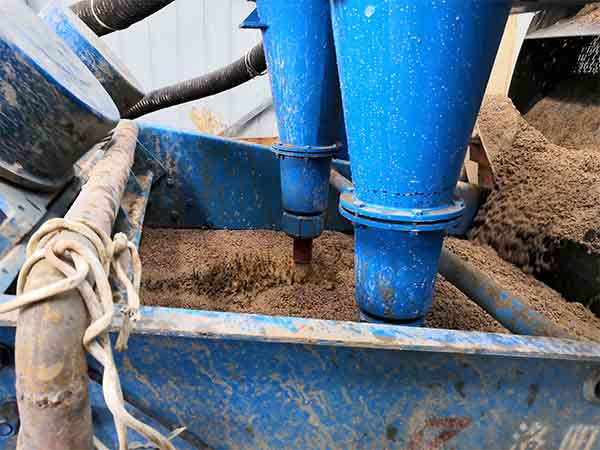Projects
-

- Sand washing machine with hydrocyclone for sale
The cyclone technology is adopted...
-

- How to choose vibrating screen panels ?
The application of vibrating screens...
-

- The Sand Pump Types
The sand pump is a device that increases the energy...
-

- What Is The Reason For The Broken Shaft Of The Motor?
The function of the vibrating motor is to...
Technical Description Of The Hydrocyclone Working Principle
Date: 2024-05-08 From: Longding Author: admin
The working principle of the hydrocyclone is to use strong centrifugal force to separate the mixture under high-speed rotation. The hydro cyclone uses external pressure to push the feed mixture into the cyclone at a high speed. Since the mixture moves along the tangential direction of the cyclone, this will cause the liquid to rotate along the wall of the cylinder. This movement is generally called an external cyclone.

The particles in the external vortex flow are subject to centrifugal force. If its density is greater than the density of the surrounding liquid, the centrifugal force it is subject to will become greater and greater. Once the centrifugal force is greater than the liquid resistance caused by the movement, the particles will overcome this resistance and move toward the wall, separating from the surrounding liquid. The particles reaching the vicinity of the wall are pushed by the liquid above the cyclone and move downward along the wall. When it reaches the bottom flow outlet, it gathers into a highly thickened suspension and is discharged from the bottom flow outlet. The separated liquid continues to rotate downward and moves into the conical section. As the inner diameter of the hydrocyclone gradually decreases, the liquid rotates faster. Since the pressure distribution of the liquid along the radial direction is uneven when the vortex is generated, the pressure is smaller as it approaches the axis and approaches zero at the axis.
It becomes a low-pressure area or even a vacuum area, causing the liquid to move toward the axis. At the same time, since the bottom flow port of the hydrocyclone separator is greatly reduced, the liquid cannot be discharged quickly from the bottom flow port, and the overflow port in the center of the top cover of the cyclone chamber is in a low-pressure area, so part of the liquid moves toward it, thus forming an upward rotation and being discharged from the overflow port.
Previous:Russian Customers Order 100 Tons Silica Sand Production Line
Next:How To Clean The Filter Cloth Of The Mineral Processing Filter Press?
Leave a Message
Here you can submit any questions and we will get back to you as soon as possible. We will not disclose the information you submit to anyone, please rest assured.


Inquiry